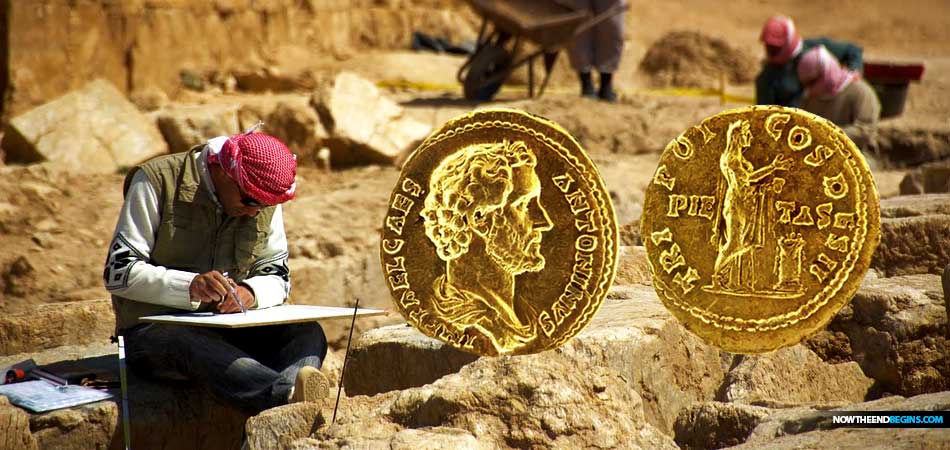
Archaeologists have uncovered the entrance gate to the biblical city of Zer during excavations carried out in the Golan Heights over the past two weeks, the Golan Regional Council said Sunday.
How exciting is the news coming out of Israel today that yet another ancient city mentioned in the Bible has been found! Since NTEB was started back in 2009,
dozens of such discoveries have been made, giving further proof that every word of your
King James Bible is indeed true and trustworthy. This lies in stark contrast to all those cities mentioned in the
book of Mormon that have never been uncovered, or ever will. But when your religion is based on a '
magic stone' what do you really expect, anyway?
FROM THE JERUSALEM POST: In recent days, and after a year of recess, a group of 20 archaeologists from all over the world, together with director of the Bethsaida Project, Dr. Rami Arav, and under the auspices of the Hebrew Union College, Jerusalem, conducted new excavations in two different areas of Bethsaida. The ancient fishing village is mentioned several times in the New Testament as a city where Jesus lived and where he miraculously fed a multitude of people with five loaves and two fish.
"And the fenced cities are Ziddim, Zer, and Hammath, Rakkath, and Chinnereth," Joshua 19:35 (KJV)
Archaeologists said the size, wealth and impressive fortifications indicate that Zer was a major city. “There are not many gates in this country from this period. Bethsaida was the name of the city during the Second Temple period, but during the First Temple period it was the city of Zer,” Arav said, pointing to Joshua 19:35, which says: “The fortified towns were Ziddim, Zer, Hammath, Rakkath, Kinnereth.”
"The same came therefore to Philip, which was of Bethsaida of Galilee, and desired him, saying, Sir, we would see Jesus." John 12:21 (KJV)
Arav began carrying out excavations of et-Tell on behalf of the University of Nebraska nearly 30 years ago. In these excavations, he identified the ancient Bethsaida, and following his excavations and discoveries, masses of Christian pilgrims visited the site because of its great importance to Christianity.
Over the years, excavators have discovered in Bethsaida many remains from various periods. The excavations are conducted in the Jordan Park area, northeast of the Sea of Galilee.
Avi Lieberman, director of the Jordan Park in which Bethsaida is located said: “The staff at the
Jordan Park and the
Golan Tourism are happy for the tens of thousands of visitors who visit the park every day. The wonderful park is also an impressive archaeological site. I amazed each time by the arrival of thousands of evangelical visitors to Bethsaida. I am confident that the latest discoveries will bring more visitors to the park from around the world and from Israel.”
Another finding made in the past two weeks was discovered underneath what was seemingly the floor of a Roman temple built by Herod’s son Philip, which he dedicated to Julia, the daughter of Augustus.
There archaeologists found coins, beads, jugs and house keys as well as a shield that belonged to a Roman soldier. The most significant finding was a coin dated to 35 BC, which was minted in Acre on the occasion of the arrival of Cleopatra and Marc Antony. There is a total of 12 of these coins.
Over the years various findings made in the area have made waves in the world of archaeology. Several years ago, a gold coin bearing the portrait of Roman Emperor Antoninus Pius, who reigned from 138 to 161 AD, was discovered by an excavator working with Arav.
source
No comments:
Post a Comment